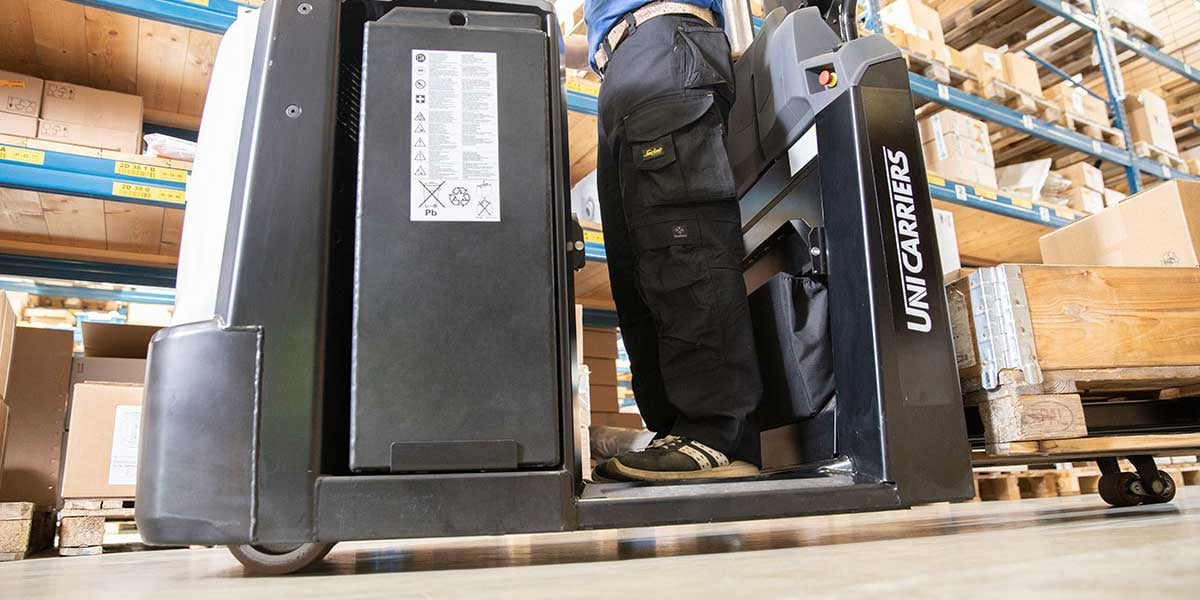
If the surface you step onto, to get into your forklift is well-designed, you probably won't even notice it at all. But a lack of care from the manufacturer when it comes to this small detail adds to the strain that drivers experience on the job, which will ultimately affect your operation and increase costs.
Generally speaking, the step-in height on a forklift should be as low as possible. This means that it takes less effort for the driver to climb on or off the truck during a busy shift.
All trucks can be improved with a lowered step-in height, but it's especially important in low-level order picking trucks, since the drivers can climb on and off the trucks hundreds of times a shift while picking goods.
When comparing order picking trucks from different manufacturers, you might notice that the step-in height only differs by a few centimetres, or even a few millimetres. However, this small variation can have a big impact.
When the operator steps on and off the truck hundreds of times a shift, for days, weeks and years on end, these few millimetres add up to huge distances. Bringing these distances down by reducing the height of the step is a simple way of saving the operator from fatigue and injuries — which cost you money.
Forklifts are full of components which, when ergonomically designed, can make a big difference to operators' conditions and your operation's success. To find out more about these features and the impact they have, click the button below to get our free guide, The importance of ergonomics in materials handling.






































Comment